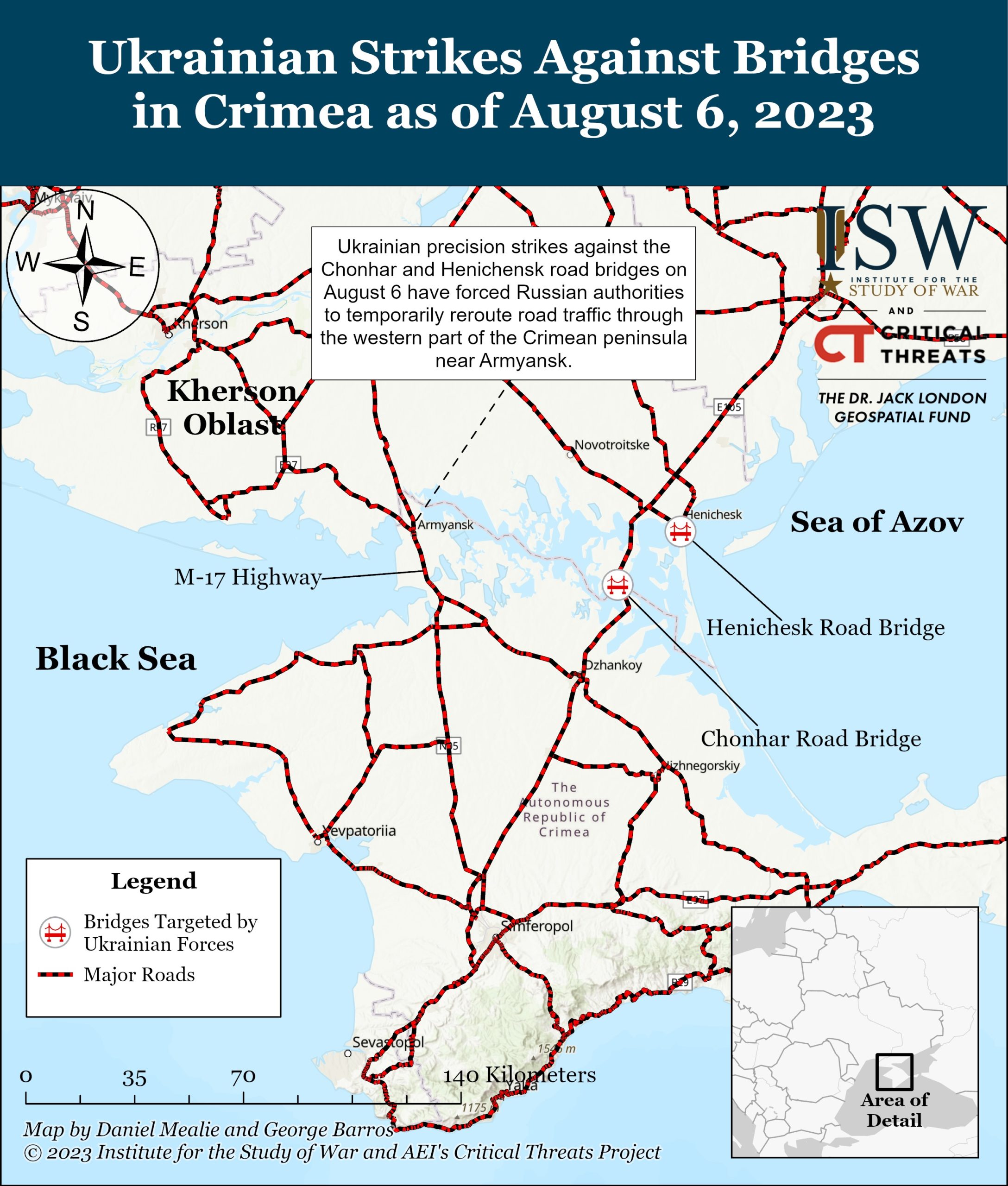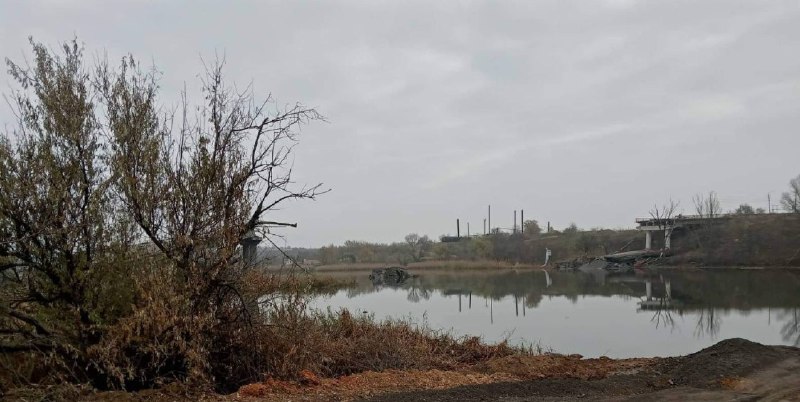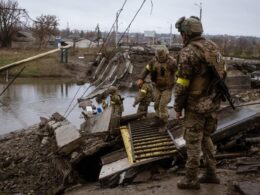Ukraine's missile strikes on vital road bridges connecting occupied Crimea and Kherson Oblast prompt Russian military to redirect traffic, causing logistical challenges and disruptions in supply routes, ISW reports.
Ukrainian forces struck two key road bridges along critical Russian grounds lines of communication (GLOCs) connecting occupied Crimea and occupied Kherson Oblast on August 6, causing Russian forces to reroute road traffic from shorter eastern routes to longer western routes. Kherson Oblast occupation administration head Vadimir Saldo claimed that Ukrainian forces launched 12 missiles at a road bridge across the Henichesk Strait connecting Henichesk Raion to the Arabat Spit and that Russian air defenses intercepted nine of the missiles.
Russian sources amplified images showing significant damage to the bridge and claimed that Ukrainian strikes partially collapsed a section of the bridge. Russian sources amplified footage showing Ukrainian forces striking the Chonhar road bridge along the M-18 (Dzhankoi-Melitopol) highway connecting occupied Crimea with occupied Kherson Oblast and subsequent minor damage to both sides of the bridge.
Crimean occupation head Sergei Aksyonov claimed that Ukrainian forces launched two missiles at the bridge and that one missile made it through Russian air defenses and damaged the roadbed of the road bridge. Russian sources claimed that Ukrainian forces used Storm Shadow cruise missiles to conduct both strikes, although ISW has yet to observe confirmation of Russian forces intercepting Storm Shadow cruise missiles.
Aksyonov announced that repair work is underway at the Chonhar bridge and that Russian officials will reroute all traffic through the Armyansk and Perekop checkpoints along the M-17 (Armyansk-Oleshky) and T2202 (Armyansk-Nova Kakhovka) highways.
The Crimean occupation transport ministry announced that all traffic through the Dzhankoi checkpoint along the M-18 highway is closed but that traffic along the Kerch Strait bridge and the Kerch Strait ferry crossing is operating normally.
The Russian Federal Security Service (FSB) suspended civilian entry to the Arabat Spit as of July 31, and Russian officials have not commented on the status of traffic along the Henichesk-Arabat Spit GLOC.
Ukrainian strikes on bridges along critical Russian GLOCs are a part of the Ukrainian interdiction campaign focused on setting conditions for future decisive counteroffensive operations. A prominent Wagner-affiliated Russian milblogger argued that the Ukrainian strikes on August 6 show that Ukrainian forces are methodically trying to cut off the Russian grouping in southern Ukraine and disrupt its logistics in a way similar to the Ukrainian interdiction campaign during the Kherson counteroffensive.
The milblogger noted that Russian defenses on west (right) bank Kherson Oblast broke down in a matter of days following months of Ukrainian strikes on Russian logistics and expressed concern that the situation could repeat itself.
The Ukrainian strikes on the eastern crossing points will likely disrupt the transport of Russian personnel, materiel, and equipment from occupied Crimea to critical Russian defensive operations in western Zaporizhzhia Oblast and the Zaporizhzhia-Donetsk Oblast border area for some, undetermined, time. Ukrainian forces appear to be also expanding their interdiction efforts to target Russian naval targets involved in Russian logistics in the Black Sea as ISW has previously observed.
Ukrainian officials have routinely stated their commitment to a deliberate interdiction campaign against Russian military targets to degrade Russian logistics and defensive capabilities to set favorable conditions for future Ukrainian counteroffensive activity.
Read also:
- Ukrainian troops destroy 6 Russian ammo dumps within 24 hours
- UK intel: Russia lost at least 50% of its 30,000 paratroopers
- Frontline report: Ukraine strikes Crimean bridges and military targets, disrupting Russian logistics





